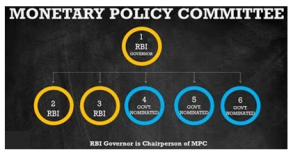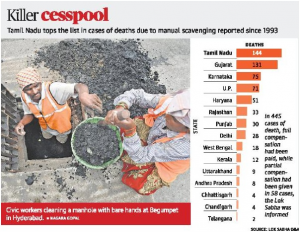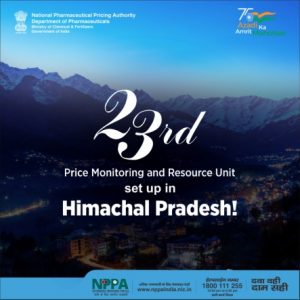DAILY CURRENT AFFAIRS (APRIL 09, 2022)
THE ECONOMIC DEVELOPMENTS
1. ‘WORLD FOOD PRICES ROSE TO A NEW RECORD IN MARCH 2022’: FAO
THE CONTEXT: World food prices jumped to a new record high in March 2022 as the war in Ukraine caused turmoil in markets for staple grains and edible oils, the U.N. food agency.
THE EXPLANATION:
- The Food and Agriculture Organization’s (FAO) food price index, which tracks the most globally-traded food commodities, averaged 159.3 points last month versus an upwardly revised 141.4 for February 2022.
- FAO said Russia was the world’s largest exporter of wheat and Ukraine was the fifth largest. Together, they provide 19% of the world’s barley supply, 14% of wheat, and 4% of maize, making up more than one-third of global cereal exports.
- They both are major exporters of sunflower oil via the Black Sea, and Moscow’s six-week-old invasion of its neighbour has stalled Ukrainian exports.
- FAO warned last month (March 2022)that food and feed prices could rise by up to 20% as a result of the conflict in Ukraine, triggering a jump in global mal nourishment.
- FAO also cut its estimate of world wheat production in 2022 to 784 million tonnes from a forecast of 790 million last month (March 2022) as it factored in the possibility that at least 20% of Ukraine’s winter crop area would not be harvested. It also lowered its projection of global cereals trade in the 2021/22 marketing year.
- Also, the UN agency highlighted the fact, Russia is also a world leader in fertilizer exports.”The likely disruptions to agricultural activities of these two major exporters of staple commodities could seriously escalate food insecurity globally.
| Food Price Index
• It was introduced in 1996 as a public good to help in monitoring developments in the global agricultural commodity markets. • The FAO Food Price Index (FFPI) is a measure of the monthly change in international prices of a basket of food commodities. • It measures changes for a basket of cereals, oil seeds, dairy products, meat and sugar. • Base Period:2014-16. |
2. CENTRE SETS UP TASK FORCE TO PROMOTE ANIMATION, GAMING
THE CONTEXT: The Information and Broadcasting Ministry has constituted an Animation, Visual Effects, Gaming and Comics (AVGC) promotion task force. Headed by the I&B Secretary, the task force will submit its first action plan within 90 days.
THE EXPLANATION:
- It has representation from the industry, academia and State governments.Earlier, Union Finance in her Budget speech, had announced the creation of AVGC promotion task force.
- The body will frame a national AVGC policy; recommend national curriculum framework for graduation, post-graduation and doctoral courses in AVGC-related sectors; and facilitate skilling initiatives in collaboration with academic institutions, vocational training centres and industry.
- It will boost employment opportunities and help in the promotion and market development activities to extend global reach. of the Indian industry; enhance exports and recommend incentives to attract foreign direct investment in the sector.
- The I&B Ministry said the AVGC sector in the country had the potential to become the torch bearer of “Create in India” and “Brand India”. “India has the potential to capture 5% of the global market share by 2025, with an annual growth of around 25-30% and creating over 1,60,000 new jobs annually”.
- The task force comprises Secretaries of the Ministry of Skill Development and Entrepreneurship, Department of Higher Education, Ministry of Education, Ministry of Electronics and Information Technology, and the Department for Promotion of Industry and Internal Trade.
| VALUE ADDITION:
SCOPE OF AVGC Contribution in Revenue: • The number of gamers in India grew to about 400 million by mid of 2020 from about 250 million gamers at the end of fiscal year 2018-19. • This makes it the second largest base of online gamers in the world after China. • Online casual gaming, which forms a large chunk of the total gaming revenue, is projected to grow at a Compound Annual Growth Rate (CAGR) of about 29% over the next four years to reach revenues of Rs 169 billion by FY25. Employment Generation: • The potential for job opportunities in the AVGC sector is humongous. • The number would vary between around 70,000 to 1.2 lakh job opportunities for the entire space. |
3. SC UPHOLDS NEW RESTRICTIONS ON RECEIVING FOREIGN FUNDS
THE CONTEXT: The Supreme Court upheld amendments introducing restrictions in the Foreign Contribution (Regulation) Act (FCRA) while holding that no one has a fundamental or absolute right to receive foreign contributions.
THE EXPLANATION:
- In a judgment that may hit non-governmental organisations (NGOs) working at the grass-root level with no direct link to foreign donors, the court reasoned that unbridled inflow of foreign funds may destabilise the sovereignty of the nation.
- The restrictions involve a bar on using operational FCRA accounts to get foreign contributions and mandatory production of the Aadhaar card for registration under the FCRA. They require NGOs and recipients to open a new FCRA account at a specified branch of the State Bank of India in New Delhi as a “one-point entry” for foreign donations.
- The petitioners, including individuals and NGOs engaged in cultural, educational, religious activities, argued that the amendments suffered from the “vice of ambiguity, over-breadth or over-governance” and violated their fundamental rights. They said the new regime amounts to a blanket ban on the capacity of intermediary organisations in India to distribute foreign donations to smaller and less visible NGOs. But the court countered that the amendments only provide a strict regulatory framework to moderate the inflow of foreign funds.
‘No absolute right’
- According to the three bench judge, “No one can be heard to claim a vested right to accept foreign donations, much less an absolute right”.
- Free and uncontrolled inflow of foreign funds has the potential to impact the socio-economic structure and polity of the country. “Philosophically, foreign contribution (donation) is akin to gratifying intoxicant replete with medicinal properties and may work like a nectar,” the ruling said.
Value Addition:
Foreign Contribution (Regulation) Act:
- It is an act of Parliament enacted in 1976 and amended in 2010. It was to regulate foreign donations and to ensure that such contributions do not adversely affect internal security.
- Coverage: It is applicable to all associations, groups, and NGOs which intend to receive foreign donations.
- Registration: It is mandatory for all such NGOs to register themselves under the FCRA. The registration is initially valid for five years. Further, it can be renewed subsequently if they comply with all norms.
- Registered NGOs can receive foreign contributions for five purposes — social, educational, religious, economic, and cultural. There are 22,591 FCRA registered NGOs.
Foreign Contribution Regulation (Amendment) Rules 2020:
- New rules require any organization that wants to register itself under the FCRA to have existed for at least three years. Further, it should have spent a minimum of Rs. 15 lakh on its core activities during the last three financial years for the benefit of society.
- Office bearers of the NGOs seeking registration under the Foreign Contribution (Regulation) Act must submit a specific commitment letter from the donor. It should indicate the amount of foreign contribution and the purpose for which it is proposed to be given.
- Any NGO or person making an application for obtaining prior permission to receive foreign funds shall have an FCRA Account.
4. RBI TO ‘FOCUS’ ON INFLATION
THE CONTEXT: The Reserve Bank of India’s Monetary Policy Committee raised its estimate for inflation in FY23 to 5.7%, from the 4.5% forecast in February 2022 before Russia invaded Ukraine, and stressed that it would now turn its focus to the “withdrawal of accommodation to ensure that inflation remains within the target going forward”.
THE EXPLANATION:
- According to RBI Governor, “For the last three years growth was ahead of inflation in sequence. This time we have reversed it because we thought the time is appropriate.
‘War-induced factors’
- Also the Governor noted, MPC had decided to revise the inflation projections for FY23 upwards with the estimate for Q1 at 6.3%; Q2 at 5.8%; Q3 at 5.4%; and Q4 at 5.1% due to “war-induced factors”.
- He pointed to the sharp increase in crude oil, edible oil and wheat prices, and the cost of feed — which has pushed prices of poultry, egg and dairy products — as reason for the higher estimates.
- Earlier, the MPC voted unanimously to keep the policy repo rate unchanged at 4%.
- He also noted, the escalating geopolitical tensions had cast a shadow on India’s economic outlook. As a result, real GDP growth for FY23 has been projected at 7.2%, compared with 7.8% estimated earlier.
VALUE ADDITION:
What is Monetary Policy Committee?
The Monetary Policy Committee (MPC) is a committee constituted by the Central Government and led by the Governor of RBI. Monetary Policy Committee was formed with the mission of fixing the benchmark policy interest rate (repo rate) to restrain inflation within the particular target level. The RBI governor controls the monetary policy decisions with the support and advice of the internal team and the technical advisory committee.
Initially, the main decisions related to interest rates were taken by the Governor of RBI alone before the establishment of the committee. MPC was constituted under the Reserve Bank of India Act, 1934 as an initiative to bring more transparency and accountability in fixing the Monetary Policy of India. MPC conducts meetings at least 4 times a year and the monetary policy is published after every meeting with each member explaining his opinions.

Instruments of Monetary Policy
There are both direct and indirect instruments used for implementing monetary policy. Few include:
- Repo rate
- Reverse Repo rate
- Liquidity Adjustment Facility (LAF)
- Marginal Standing Facility (MSF)
- Corridor
- Bank Rate
- Cash Reserve Ratio (CRR)
- Statutory Liquidity Ratio (SLR)
- Open Market Operations (OMOs)
- Market Stabilisation Scheme (MSS)
THE SCIENCE AND TECHNOLOGY
5. INDIA SUCCESSFULLY FLIGHT TESTS MISSILE SYSTEM SFDR BOOSTER
THE CONTEXT: The Defence Research and Development Organisation (DRDO) achieved yet another feat by successfully testing the solid fuel ducted ramjet (SFDR) booster from a defence facility off the Odisha coast. The new technology will help develop long-range air-to-air missiles.
THE EXPLANATION:
- The test has successfully demonstrated the reliable functioning of all critical components involved in the complex missile system and met all the mission objectives.
- According to DRDO, “After the ground booster phase the missile was guided to high altitude to simulate aircraft release conditions. Subsequently, the nozzle-less booster was ignited and it accelerated the system to the required Mach number for ramjet operation.”
- The performance of the system has been confirmed from the data captured by a number of range instruments like telemetry, radar and electro optical tracking systems (EOTS) deployed by ITR.
- Developed by Hyderabad-based Defence Research and Development Laboratory (DRDL) in collaboration with other DRDO laboratories, the SFDR based propulsion enables the missile to intercept aerial threats at supersonic speeds at very long range.
- All the subsystems including the booster and nozzle-less motor performed as expected. So far, the technology was available only with a handful of countries in the world. The successful validation of the technology will enable DRDO to develop
long range air-to-air missiles. - The air breathing ramjet technology will propel long range air-to-air missiles to engage with targets at supersonic speed and high accuracy. The missiles will provide a multi-layered aerial protection to important establishments from hostile.
Value Addition:
Solid Fuel Ducted Ramjet (SFDR)
- The Solid Fuel Ducted Ramjet (SFDR) developed under a joint Indo-Russian R&D project achieved a speed of Mach 3 on its first flight.
- The ramjet propulsion system used in the SFDR acts as an oxidizer and the solid propellant reacts as air flows through a solid propellant duct.
- Unlike conventional rockets that carry propellant and oxidizer, Ramjet uses the air as an oxidizer just like a jet engine.
- Possible usage of SFDR: These are to be used in the future variants of missiles, including an advanced version of the ASTRA, Beyond Visual Range AAM (BVRAAM) expected to extend the range to 150 km in the Mk-3 version.
- According to the DRDO, the SFDR has a range of 120 km with a speed range of 2.3-2.5 Mach.
- Unbound by the diameter of aerial weapons, a ground-launched SFDR would accelerate a missile over 250 km. A potential application of the Indo-Russian SFDR is extended range SAM – such as the futuristic Indian SAM-X.
THE PRELIMS PRACTICE QUESTIONS
QUESTION OF THE DAY
Q. Consider the following statements about Standing Deposit Facility (SDF):
- It is a tool available with RBI to inject liquidity in the economy.
- It replaces the earlier Marginal Standing Facility (MSF).
Which of the statements given above is/are incorrect?
a) 1 only
b) 2 only
c) Both 1 and 2
d) Neither 1 nor 2
ANSWER FOR 8TH APRIL 2022
Answer: B
Explanation:
- The Human Rights Council is an inter-governmental body within the United Nations system made up of 47 States responsible for the promotion and protection of all human rights around the globe.
- The Council was created by the United Nations General Assembly on 15 March 2006.
- It meets at the UN Office at Geneva.
- The Council is made up of 47 United Nations Member States which are elected by the UN General Assembly. Each elected member serves for a term of three years. (Statement 1 is correct and 2 is incorrect).
- Countries are disallowed from occupying a seat for more than two consecutive terms.(Statement 3 is correct).
- Human Rights Council replaced the former United Nations Commission on Human Rights.The UNHRC passes non-binding resolutions on human rights issues through a periodic review of all 193 UN member states called the Universal Periodic Review (UPR).





